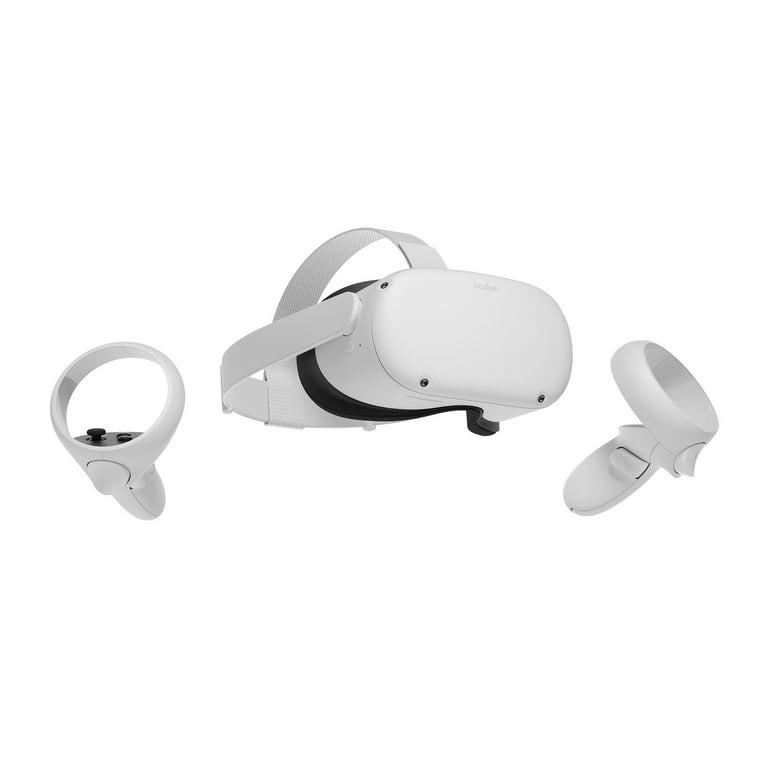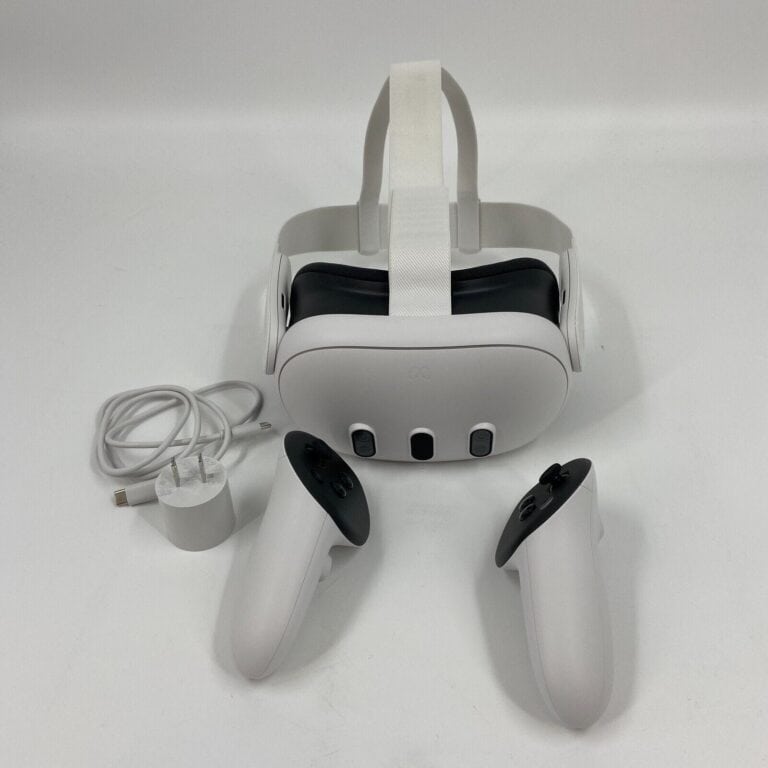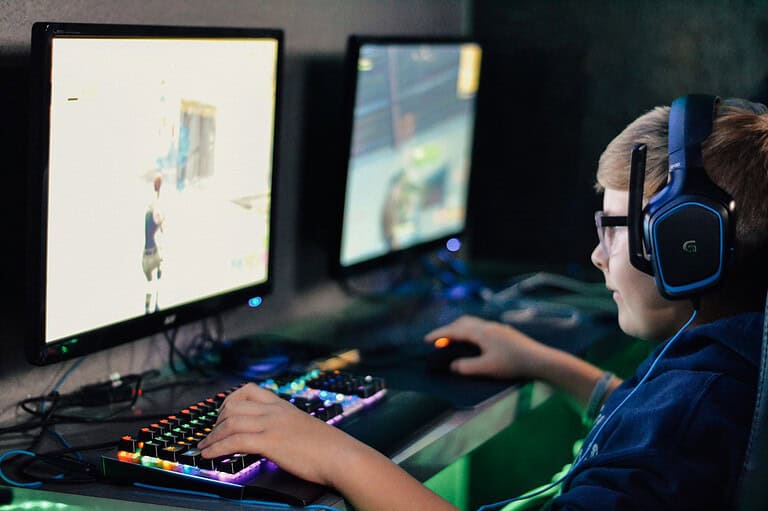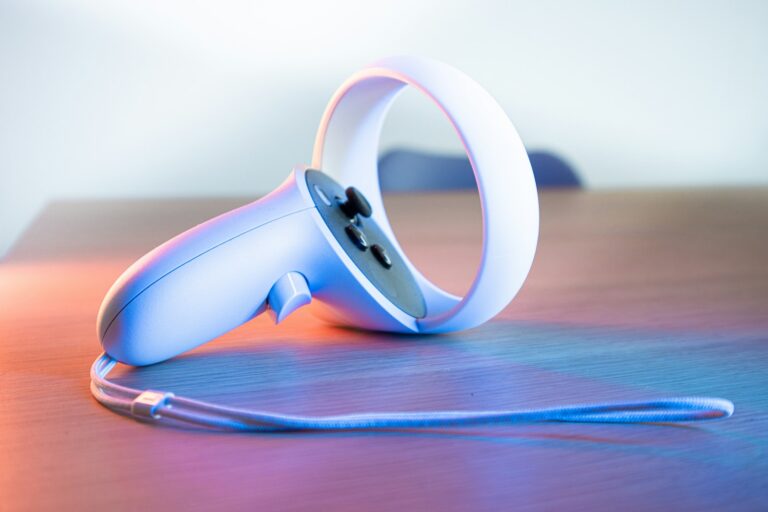
The short answer is no—the Quest 2 is a self-contained VR console you can toss in a backpack, pop on in the living room, and start blasting Beat Saber blocks or binging YouTube VR without ever touching a computer. But that isn’t the whole story. Pairing the headset with a capable PC unlocks a second library, sharper visuals, and mods you simply can’t squeeze onto the headset’s mobile-class hardware. Below is everything you need to know before deciding whether to stay cable-free or plug in.
Stand-Alone Power: What the Quest 2 Does by Itself
- Built-in Snapdragon XR2 chipset renders most Quest Store titles at 90–120 Hz.
- 6 GB RAM and up to 256 GB of storage let you juggle games like Asgard’s Wrath II and Population: One without a micro-SD card.
- Inside-out tracking means no external sensors—just pop the headset on and map your guardian boundary.
- Hand-tracking v2.3 (rolled out in early 2025) supports finger-pinch gestures in apps such as Figmin XR and Meta’s Horizon Workrooms.
- Wi-Fi 6E support (added via firmware update) boosts wireless download speeds and reduces latency for multiplayer titles.
Why Bother With a PC?
- Access to SteamVR & Rift libraries. Games like Half-Life: Alyx, Microsoft Flight Simulator 2024, and high-fidelity racing sims still require desktop-class GPUs.
- Higher visual settings. A mid-range RTX 4060 Ti PC can supersample the Quest 2’s display to ~200% resolution, virtually eliminating screen-door effect.
- Modding & custom content. PC versions of Boneworks and Skyrim VR support graphical mods and user-generated levels that don’t run natively on mobile silicon.
- Creative and productivity apps. Full-fat PC software like Blender, Gravity Sketch PC, or Adobe Substance 3D stream to the headset for design work or virtual monitors.
Link Options: Wired, Wireless, or Cloud
| Method | Typical Latency | Bandwidth | Best For |
|---|---|---|---|
| Meta/Oculus Link Cable (USB-C 3.2 Gen 2) | ~18 ms | 5 Gbps | Visual clarity; long sessions |
| Air Link (Wi-Fi 6/6E) | 20–30 ms on 5 GHz | Up to 200 Mbps | Untethered room-scale play |
| SteamVR Wireless via Virtual Desktop | 25–35 ms | Adaptive | Cross-platform streaming & desktop multitasking |
| Cloud PC (Shadow, Plutosphere) | 35–60 ms* | Internet dependent | Travelers using lightweight laptops |
*Under 20 ms if the cloud data center is within ~200 miles and you’re on fiber; otherwise expect noticeably higher lag.
2025 Recommended PC Specs for Smooth Quest 2 PCVR
- GPU: NVIDIA RTX 3060 (8 GB) or AMD Radeon RX 6700 XT minimum; RTX 4060 Ti / RX 7700 XT for 90 fps at high settings.
- CPU: Intel Core i5-13400 or AMD Ryzen 5 7600 and above.
- RAM: 16 GB dual-channel.
- Ports: USB-C 3.2 Gen 2 (for wired) plus Wi-Fi 6E adapter or router (for Air Link).
- OS: Windows 11 22H2 or later; macOS is still unofficial via third-party wrappers.
Tip: Meta’s free “Oculus Link PC Check” utility automatically flags bottlenecks before you spend cash on cables.
Five-Minute PCVR Setup Checklist
- Install Meta Quest PC app and enable the “Public Test Channel” for the latest drivers.
- Opt-in to Air Link inside the Experimental Features menu on the headset.
- Connect the Quest 2 via USB-C once to pair if you plan wired play—this also keeps the battery topped up.
- Launch SteamVR; it will detect the headset as an OpenXR device.
- Tweak bitrate (200 Mbps for Wi-Fi 6E; 150 Mbps for 5 GHz) in the PC app to balance clarity and latency.
Beyond Gaming: What Else a PC Unlocks
- Virtual multi-monitor setups: Run three 1080p monitors floating in mid-air while your physical desk stays clutter-free.
- 3D content creation: Link Blender or Unreal Engine to sculpt and prototype assets directly in VR.
- Mixed-reality capture: Use PC-based OBS with Quest’s passthrough API to record green-screen-style footage for YouTube or Twitch.
- Enterprise workflows: Remote collaboration apps like Varjo Teleport and Autodesk VRED stream complex CAD assemblies that overwhelm standalone GPUs.
Is a PC Absolutely Necessary?
If your goal is fitness sessions in Supernatural, social hangouts in Horizon Worlds, or quick rounds of Walkabout Mini Golf, save the money and play cable-free. But if you’re itching for blockbuster PCVR exclusives or plan to create content, a modest gaming rig turns the Quest 2 from a capable mobile headset into a full-scale VR workstation.
Key Takeaways
- The Meta Quest 2 works perfectly as a standalone VR headset without requiring a PC connection.
- Connecting to a PC is optional but expands your gaming library with additional titles not available on the standalone platform.
- You only need an internet connection and a Meta account to start using your Quest 2 right out of the box.
Understanding the Meta Quest 2
The Meta Quest 2 delivers a standalone VR experience with powerful hardware and intuitive controls that doesn’t require a PC connection. Its combination of performance and accessibility makes it a popular choice for VR enthusiasts.
Overview of the Hardware
The Meta Quest 2 is powered by the Qualcomm Snapdragon XR2 platform specifically designed for VR and AR experiences. This processor works alongside 6GB of RAM to deliver smooth performance for games and applications.
The headset weighs approximately 503 grams (1.1 pounds), making it comfortable for extended VR sessions. Its lightweight design helps reduce neck strain during gameplay.
Storage options include 128GB and 256GB models, giving you space for numerous games and applications. Since there’s no expandable storage, choosing the right size initially is important.
The battery typically lasts 2-3 hours depending on usage. You can extend this with optional accessories like the Elite Strap with Battery.
Connection options include:
- Standalone mode: No PC required
- Link mode: Optional PC connection via USB-C
- Air Link: Wireless PC connection over Wi-Fi
Software and Operating System
The Meta Quest 2 runs on a modified Android-based operating system developed by Meta. The interface is intuitive with a home environment that serves as your virtual hub.
You access content through the Meta Quest Store, which offers hundreds of games and applications. All purchases are tied to your Meta account, which replaced the previously required Facebook login.
The system receives regular updates that add new features and improvements. These updates often enhance performance and add functionality like hand tracking improvements.
You can customize your experience with different virtual environments and personalization options. Your home space can be changed to match your preferences.
Multitasking capabilities allow you to run multiple applications simultaneously. You can easily switch between games, browsers, and social applications.
Audio and Visual Experience
The Meta Quest 2 features a display with 1832 × 1920 pixels per eye, delivering sharp visuals with minimal “screen door effect.” The refresh rate ranges from 72Hz to 120Hz depending on the application.
The field of view is approximately 90 degrees, creating an immersive visual experience. Lens spacing (IPD) can be adjusted to three positions to match your eye distance.
The headset includes built-in speakers that provide spatial audio, helping you locate sounds in 3D space. For a more immersive experience, you can connect headphones via the 3.5mm jack.
Passthrough cameras let you see your real environment without removing the headset. This feature is helpful for quickly orienting yourself in your physical space.
The guardian system creates virtual boundaries to keep you safe while in VR. It alerts you when you’re approaching physical obstacles in your play area.
Controllers and Intuitive Controls
The Meta Quest 2 Touch controllers feature precise motion tracking and haptic feedback. Each controller includes:
- Analog stick
- Two face buttons
- Trigger and grip buttons
- System and menu buttons
Hand tracking technology allows you to interact with certain applications without controllers. This feature uses the headset’s cameras to detect and interpret your hand movements.
The tracking system uses inside-out technology, meaning the headset’s cameras track the position of the controllers. This eliminates the need for external sensors or base stations in your room.
Button mapping can be customized in many applications to match your preferences. This allows for a more comfortable and intuitive control scheme.
The controllers are powered by a single AA battery each, typically lasting 30+ hours of gameplay. The battery level is visible in the Quest interface so you’re never caught by surprise.
Meta Quest 2 as a Stand-Alone Device
The Meta Quest 2 functions perfectly as a self-contained VR system without needing a PC. It delivers complete virtual reality experiences right out of the box with no additional hardware required.
The Convenience of Wireless VR
With the Meta Quest 2, you can experience VR without being tethered to a computer. This wireless design gives you complete freedom of movement in your play space. No cables means no tripping hazards and no limitations on how you move.
Setting up your Quest 2 is simple – just put it on, grab the controllers, and you’re ready to go. This accessibility makes VR more approachable for newcomers who might be intimidated by complex PC setups.
The wireless nature also allows you to take your VR experiences anywhere. You can easily bring your Quest 2 to a friend’s house or on vacation without lugging around a gaming PC.
This freedom from wires can also reduce motion sickness that some users experience when cables restrict natural movement during gameplay.
Stand-Alone Performance
The Quest 2 is powered by the Qualcomm Snapdragon XR2 Platform and 6GB of RAM, giving it impressive processing capabilities. This hardware allows it to run many popular VR games and applications independently.
The display features 1832 x 1920 pixels per eye with a smooth refresh rate of up to 120Hz. This provides clear, responsive visuals that make games and experiences feel immersive.
While stand-alone games may have simpler graphics compared to PC VR titles, developers have optimized many popular games specifically for the Quest 2’s hardware. Titles like Beat Saber, Superhot VR, and Population: One run smoothly on the device.
Battery life typically lasts 2-3 hours depending on the applications you use. For longer sessions, you can connect a portable power bank to extend your play time.
Internal Storage Options
The Quest 2 comes in different storage configurations to suit your needs. You can choose between 128GB and 256GB models, with no option to expand storage later.
When deciding which storage size to purchase, consider:
- VR games typically range from 1GB to 12GB each
- Apps and experiences vary from 500MB to 2GB
- Media content like 360° videos can consume significant space
- No ability to add SD cards or external drives
Most users find the 128GB model sufficient for a solid collection of games and apps. However, if you plan to download many titles or store media content, the 256GB version offers peace of mind.
You can always manage storage by uninstalling unused content. The Quest store keeps a record of your purchases, so you can reinstall games later without buying them again.
Compatibility with PCs and Laptops
The Meta Quest 2 works as both a standalone device and can connect to compatible computers for enhanced VR experiences. When connected to a PC, your headset gains access to a broader library of games and improved graphics capabilities.
Using Oculus Link and Air Link
You can connect your Meta Quest 2 to a PC using either a physical Link cable or wirelessly via Air Link. The Link cable provides the most stable connection, using a high-quality USB-C cable to connect directly to your computer.
Air Link lets you connect wirelessly to your PC over your home Wi-Fi network. This option gives you freedom of movement without cables, but requires a strong, stable network connection.
To use either method:
- Install the Meta app on your PC
- Enable Oculus Link in your headset settings
- Connect via cable or select your PC in the wireless setup
Both methods transform your Quest 2 into a PC VR headset, though the cable option typically offers slightly better performance and reliability.
Recommended PC Specifications
Your computer needs to meet certain requirements to work properly with your Meta Quest 2. Here are the minimum specifications:
Processor: Intel i5-4590 / AMD Ryzen 5 1500X or greater
RAM: 8GB or more
Operating System: Windows 10 or newer
USB Ports: At least one USB 3.0 port (for Link cable)
Graphics Card:
- NVIDIA GTX 1060 or greater
- AMD Radeon RX 400 Series or greater
Not all laptops are compatible, especially those with integrated graphics. Gaming laptops with dedicated GPUs typically work best. Standard Chromebooks and MacBooks cannot run Quest 2 PC VR games due to hardware limitations.
For the best experience, a gaming PC with a higher-end graphics card is recommended, though many mid-range systems work adequately.
Meta Quest 2 Enhancements with PC
Connecting to a PC significantly expands your Quest 2’s capabilities. You gain access to the entire Steam VR library and Oculus Rift game catalog, which includes titles not available on the standalone Quest store.
PC connection also improves visual quality in compatible games. You’ll notice:
- Higher resolution textures
- More detailed environments
- Better lighting effects
- Increased draw distance
- More complex physics simulations
These enhancements are possible because your PC handles the heavy processing work instead of the Quest 2’s mobile processor. Some users even utilize cloud-based gaming PCs to run VR games, eliminating the need for expensive hardware.
Remember that performance depends on your PC’s capabilities—better hardware provides a smoother, more immersive VR experience with fewer compromises.
Design and Ergonomics
The Meta Quest 2 offers a lightweight, standalone VR experience with thoughtful design elements focused on user comfort. The headset’s physical characteristics directly impact how you’ll feel during extended gaming or viewing sessions.
Improved Ergonomics and Comfort
The Meta Quest 2 features a simplified design compared to previous VR headsets. The standard elastic strap system allows for quick adjustments to fit different head sizes. You can easily tighten or loosen the straps with one hand.
For enhanced comfort during longer sessions, you might consider the Elite Strap accessory, which provides better weight distribution and stability. This optional upgrade adds a rigid structure with a dial adjustment system.
The facial interface uses soft foam that conforms to most face shapes. If you wear glasses, the headset includes a spacer to provide additional room without compromising the seal against light leakage.
Weight and Balance
At approximately 503 grams (1.1 pounds), the Meta Quest 2 is relatively lightweight for a standalone VR headset. The weight is focused slightly toward the front, where the display and processing components are housed.
This front-heaviness can cause some discomfort during extended play sessions. You might notice pressure on your cheeks or forehead after 30-45 minutes of use with the standard strap.
The battery placement in the front housing creates this forward weight bias. Many users find that adding a counterweight to the back strap improves balance significantly.
For optimal comfort, consider adjusting the top strap first to support the headset’s weight, then secure the side straps. This technique distributes pressure more evenly across your head.
Applications Beyond Gaming
The Meta Quest 2 offers a wide range of non-gaming applications that make it valuable even without a PC connection. These standalone VR experiences extend from immersive mixed reality to professional and educational tools.
Adventures in Mixed Reality
Mixed reality on the Quest 2 blends virtual elements with your physical surroundings. You can use the Quest 2 without any external devices thanks to its powerful Snapdragon XR2 processor and built-in cameras.
Apps like Meta Horizon Workrooms let you work in a virtual office while still seeing your keyboard and desk. This technology creates seamless transitions between real and virtual worlds.
Home decoration apps allow you to visualize furniture in your space before purchasing. You can place virtual items in your actual room and walk around them to get a sense of size and fit.
Fitness applications like Supernatural and FitXR transform your living room into a personal gym with coaches that appear right beside you. These apps track your movements and provide real-time feedback.
Educational and Professional Use Cases
The Quest 2 excels in education and professional training without requiring a PC. Medical students can practice surgical procedures in realistic 3D environments, reducing risk and accelerating learning.
Popular Professional Applications:
- Virtual Desktop for remote work
- Gravity Sketch for 3D design
- NODA for autism therapy training
- Anne Frank House VR for historical education
Teachers can take students on virtual field trips to historical sites, inside the human body, or even to space. These immersive experiences make complex concepts easier to understand and remember.
Architecture and design professionals use VR to create and modify 3D models, allowing clients to walk through building designs before construction begins. This capability doesn’t require connecting to a computer as all the processing happens within the headset itself.
Pricing and Availability
Meta Quest 2 provides an affordable entry point to virtual reality without requiring a PC. Understanding the cost factors and where to find the device helps you make an informed purchasing decision.
Comparing Price Points
The Meta Quest 2 is no longer being actively produced, as it has been replaced by newer models like the Meta Quest 3 and Meta Quest 3S. When it was available, the Quest 2 was priced at $299 for the 128GB model and $399 for the 256GB version.
The newer Meta Quest 3S starts at $299.99, matching the original Quest 2’s entry price point. The Meta Quest 3 offers more advanced features at a higher price point.
If you’re specifically looking for a Quest 2, you might find them at discounted rates through various retailers or the second-hand market.
The value proposition of Quest 2 remains strong as a standalone VR headset. You don’t need to factor in the cost of a PC, which would add $800+ to your total investment.
Where to Purchase
While Meta has discontinued the Quest 2, you can still find units through several channels:
Online retailers:
- Amazon may have remaining inventory
- Best Buy
- Walmart
- Target
Secondary markets:
- eBay
- Facebook Marketplace
- Craigslist
When buying second-hand, check the device’s condition carefully. Look for scratches on lenses, controller damage, and ensure all accessories are included.
For new Meta VR headsets, the official Meta website is your best option. They offer direct purchasing of the newer Quest 3 and 3S models that have replaced the Quest 2.
Connecting to Other Devices
While the Meta Quest 2 doesn’t require a PC to function, it can connect to various devices to enhance your experience. You can easily link your headset to smartphones for setup and content sharing, or display your VR adventures on a TV for others to watch.
Pairing with TVs and Smartphones
To connect your Meta Quest 2 to a smartphone, you’ll need the Meta Quest app installed on your mobile device. This app is essential for the initial setup of your headset and allows you to browse the store, purchase games, and manage your VR library from your phone. Make sure your headset and phone are connected to the same Wi-Fi network for proper pairing.
For sharing your VR experience with friends, you can cast your Meta Quest 2 to a TV. This feature lets others see what you’re seeing in the headset. To cast to a TV, open the quick menu in your headset, select “Sharing,” then “Cast.” Choose your compatible smart TV or a Chromecast device from the list of available devices.
You don’t need any additional equipment like cameras or sensors for these connections. The Meta Quest 2 has everything built in for a standalone experience, though you may want a Facebook account for setup.
Frequently Asked Questions
Many Quest 2 users wonder about PC requirements and standalone capabilities. These questions address the most common concerns about how the headset functions with and without a computer.
Is a PC necessary to use the Meta Quest 2 for gaming?
No, you don’t need a PC to use the Meta Quest 2 for gaming. The Quest 2 is a standalone VR headset with its own operating system and app store.
Quest 2 is very much worth it without a PC, though the graphics won’t be quite as good as PC-powered VR. The standalone experience is one of the biggest selling points of the device.
What functions are available on Meta Quest 2 without connecting to a PC?
Without a PC, you can access the entire Quest store library of games and apps. You can browse the web, watch videos, use fitness apps, and play hundreds of native Quest games.
Social features, virtual environments, and the ability to cast your view to TVs or phones are all available in standalone mode. The Quest 2 functions as a complete VR system with no additional hardware needed.
Can I play Oculus Rift games on the Meta Quest 2 without a PC?
No, you cannot play Oculus Rift games without a PC. Rift games were designed specifically for PC-based VR and require the processing power of a computer.
However, many popular Rift titles have been adapted for the Quest platform with optimized graphics. Some games offer cross-buy, meaning if you purchase on one platform, you get access on both.
Which Meta Quest 2 games require a PC to play?
PC-required games include high-end VR titles like Half-Life: Alyx, Microsoft Flight Simulator, and Asgard’s Wrath. Any game specifically labeled as a “Rift” title needs a PC connection.
Some graphically intensive games offer both standalone and PC versions with enhanced visuals when connected. The PC versions typically feature better lighting, textures, and environmental details.
How does the Meta Quest 2 perform as a standalone device?
The Quest 2 performs surprisingly well on its own. The Snapdragon XR2 processor can handle complex 3D environments and gameplay without noticeable lag in most applications.
Battery life typically ranges from 2-3 hours of active gameplay. The graphics, while not as detailed as PC VR, are impressive for a mobile processor and continue to improve as developers optimize their games.
What are the requirements for connecting the Meta Quest 2 to a PC?
To connect your Quest 2 to a PC, you’ll need a high-quality USB cable capable of supporting data and power. Meta recommends a cable that’s at least 3 meters long.
Your PC needs to meet minimum specifications including a compatible GPU (typically NVIDIA GTX 1060 or better), Intel i5-4590/AMD Ryzen 5 1500X or greater CPU, and at least 8GB of RAM. Windows 10 or 11 is required for the Oculus software.





